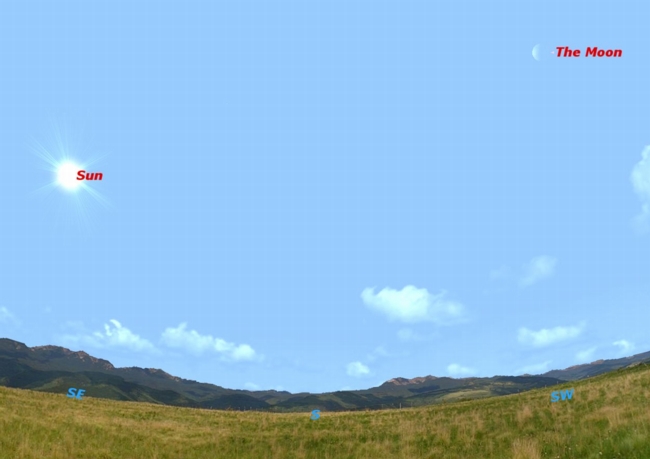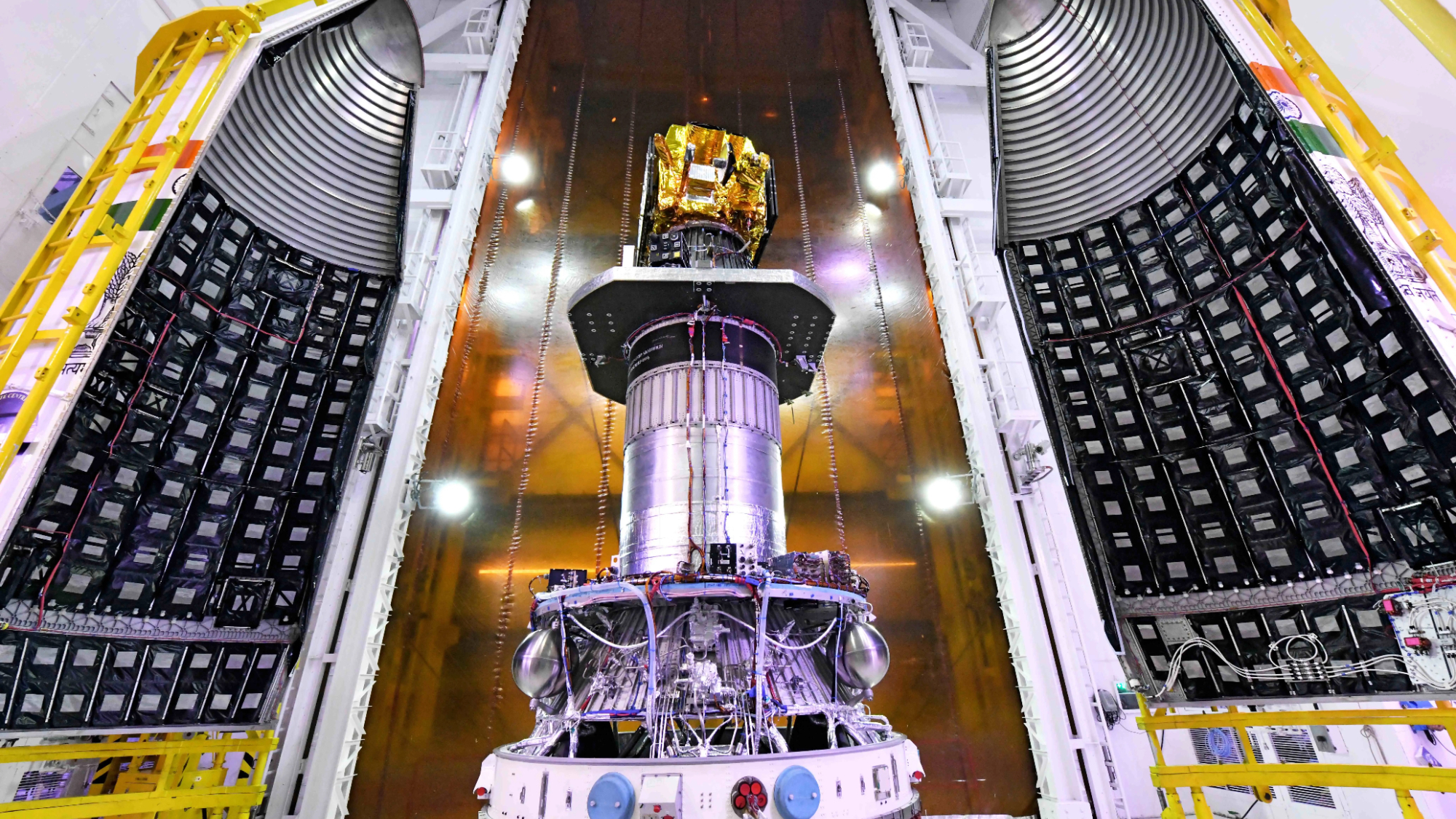Why Do We See the Moon in Daylight?

Any clear morning this week around 10 a.m. you can see the moon riding high in the western sky. Many people are surprised to see the moon in full daylight, yet it is a completely normal occurrence.
A very common misconception in astronomy is that the moon is directly opposite the sun in the sky. In fact, the moon is only in this position for a single instant in the whole lunar month: the exact time of full moon, when it is 180 degrees away from the sun. The rest of the month it can be anywhere from 0 to180 degrees away and, at least in theory, visible in the daytime sky.
At full moon, the moon is exactly opposite the sun. This means that the moon rises just as the sun is setting, and sets just as the sun is rising. This is also the only night in the month when a lunar eclipse can happen. Even so, eclipses normally happen only one full moon out of every six; the other times the Earth's shadow is either too high or too low to touch the moon.
Two things contribute to the moon being visible in daylight. First, it is bright enough that its light penetrates the scattered blue light of the sky. If you're looking at exactly the right spot with a telescope, you can also see the planets Mercury, Venus, and Jupiter in daylight, plus a few of the brightest stars (though few casual observers can actually pull this off). Secondly, the moon must be high enough in the sky to be visible.
Because of the Earth's rotation, the moon is above the horizon roughly 12 hours out of every 24. Since those 12 hours almost never coincide with the roughly 12 hours of daylight in every 24 hours, the possible window for observing the moon in daylight averages about 6 hours a day.
The moon is visible in daylight nearly every day, the exceptions being close to new moon, when the moon is too close to the sun to be visible, and close to full moon when it is only visible at night. The best times in the month to see the moon in daylight are close to first and last quarter, when the moon is 90 degrees away from the sun in the sky.
That's the situation this week. Last quarter is on Saturday, Sept. 12. If we set Starry Night software to that date, and its location to New York, we see that the moon rises at 11:06 p.m. the night before. The sun rises at 6:34 a.m., at which time the moon is 74 degrees above the horizon, almost overhead. Sun and moon will both be above the horizon until the moon sets at 3:03 p.m., although the moon will be hard to see for the last hour or so because of horizon haze.
Breaking space news, the latest updates on rocket launches, skywatching events and more!
Similarly, the moon will be well placed for daytime observation near first quarter, which next falls on Saturday, Sept. 26. The difference here is that the sun will be leading the moon, setting at 6:46 p.m., followed by moonset at 12:06 a.m.
Once you've seen the daylight moon on these "easy" dates, it's worth trying to see how many days in the month you can manage to spot it.
This article was provided to SPACE.com by Starry Night Education, the leader in space science curriculum solutions.

Geoff Gaherty was Space.com's Night Sky columnist and in partnership with Starry Night software and a dedicated amateur astronomer who sought to share the wonders of the night sky with the world. Based in Canada, Geoff studied mathematics and physics at McGill University and earned a Ph.D. in anthropology from the University of Toronto, all while pursuing a passion for the night sky and serving as an astronomy communicator. He credited a partial solar eclipse observed in 1946 (at age 5) and his 1957 sighting of the Comet Arend-Roland as a teenager for sparking his interest in amateur astronomy. In 2008, Geoff won the Chant Medal from the Royal Astronomical Society of Canada, an award given to a Canadian amateur astronomer in recognition of their lifetime achievements. Sadly, Geoff passed away July 7, 2016 due to complications from a kidney transplant, but his legacy continues at Starry Night.
